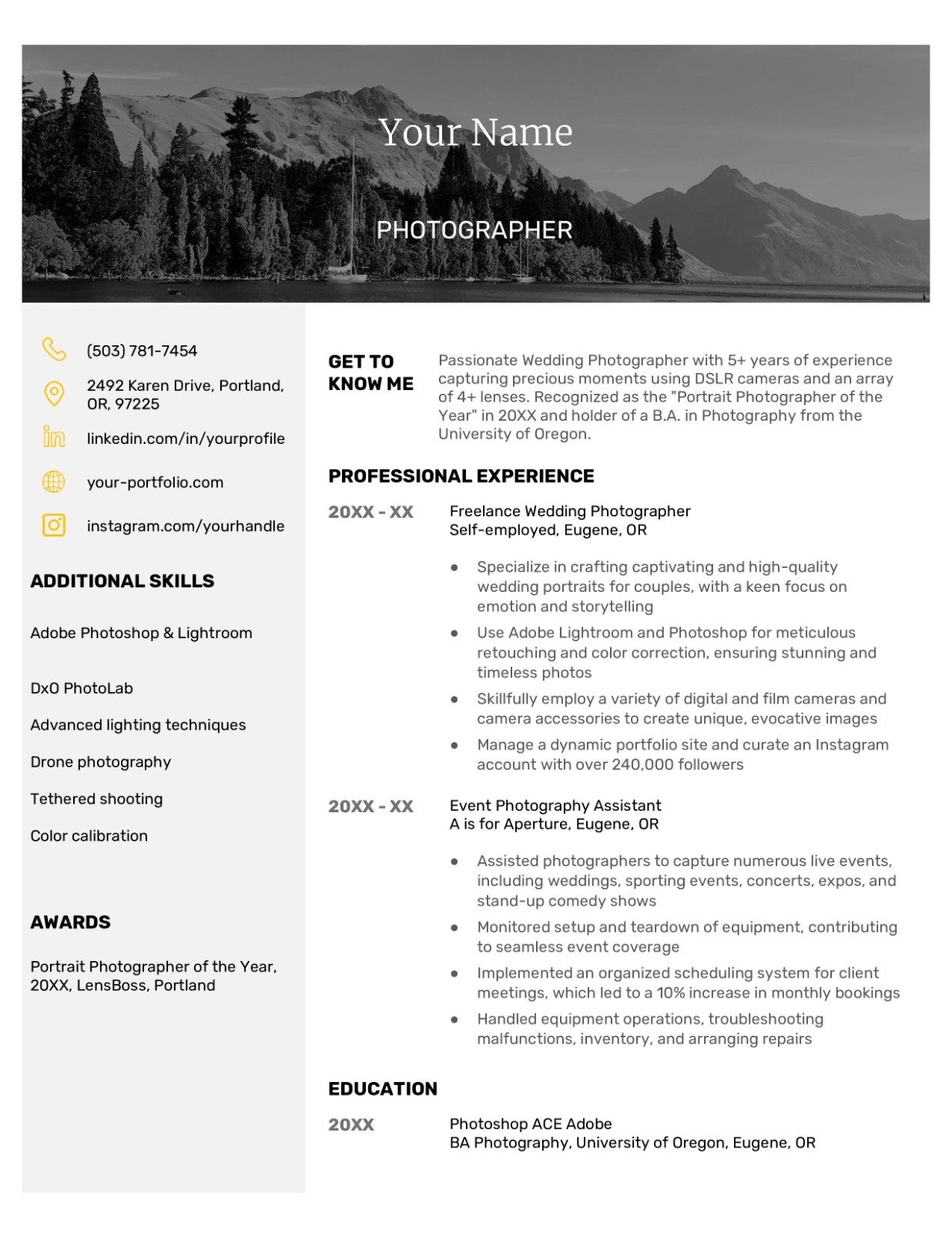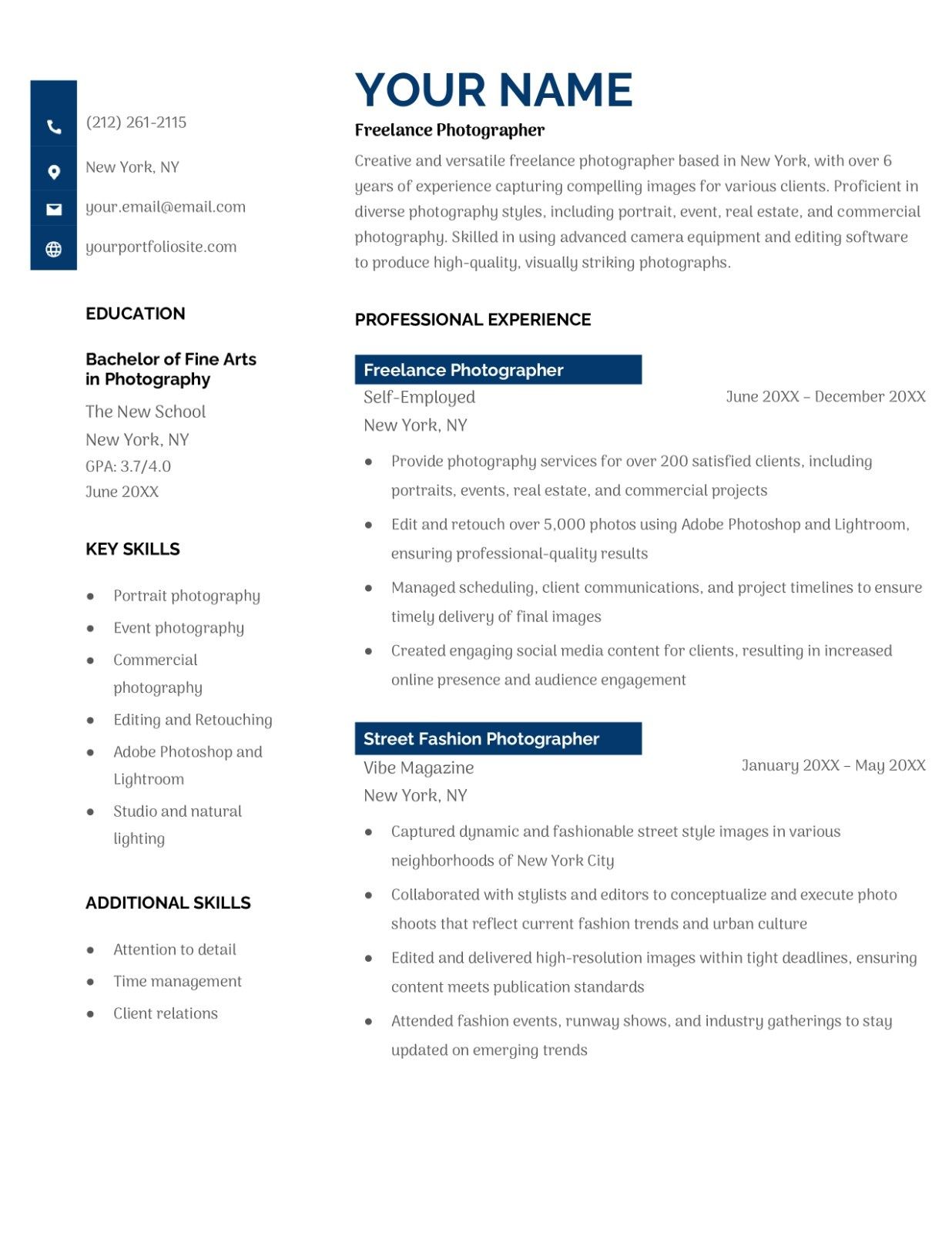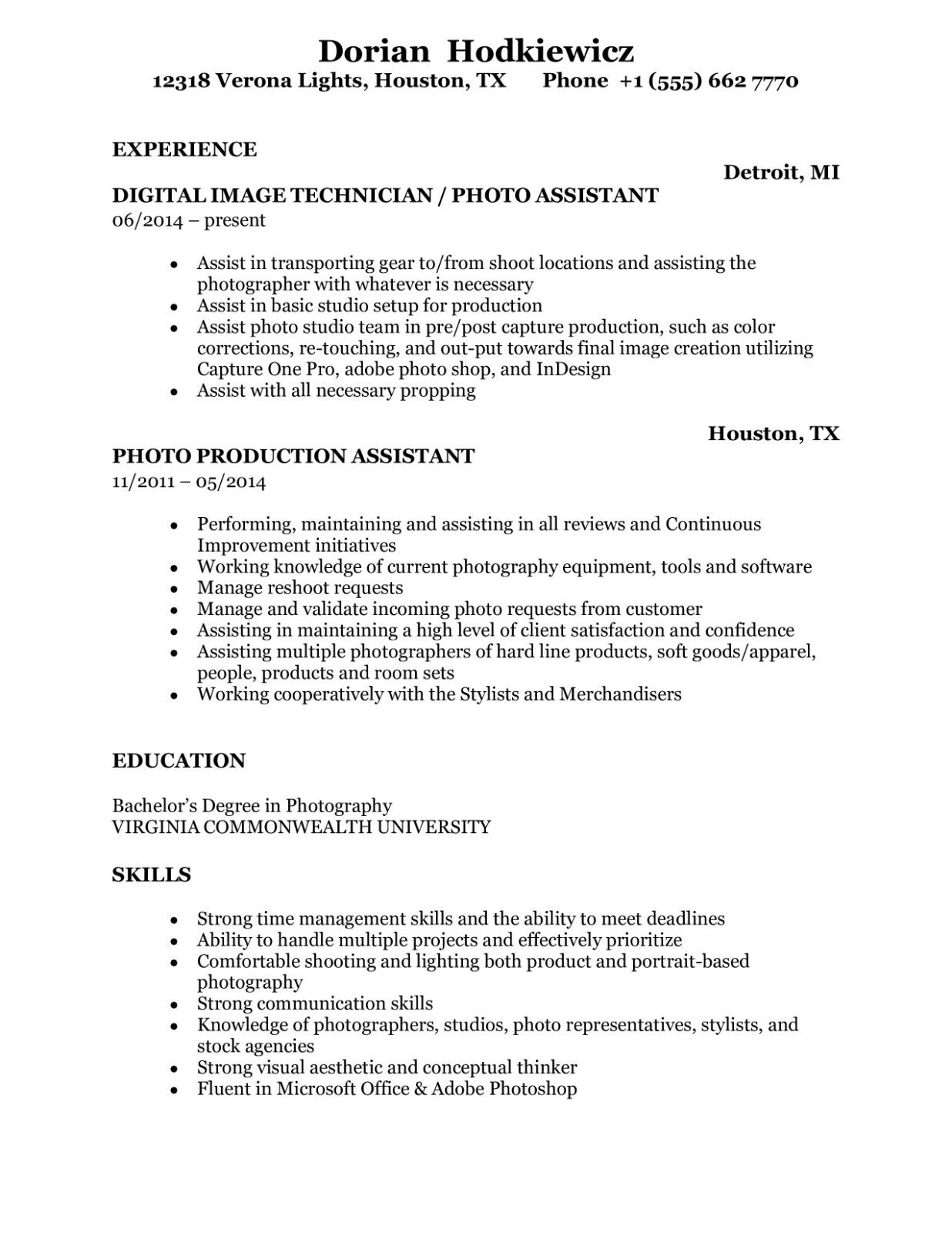Free Photographer Resume Templates + Writing Guide
Published on October 7th, 2024
Whether you are a new upcoming professional in the photography industry or have the experience, you'll need a well-structured photography resume to get new customers, jobs, or gigs. Unlike any typical resume, a photography resume has to showcase your technical expertise, creativity, and portfolio.
In this blog, we are going to share what works in an effective photography resume, giving you resume tips to present your experience, skills, and artistic vision in a manner that will separate you in this competitive marketplace.
Why Do You Need a Photography Resume?
Although your portfolio mostly is the central stage in showcasing your work as a photographer, context comes with a resume, especially if one is applying for job openings. This is mostly sought by formal job applications like photography studios, media houses, or corporate clients looking for an in-house photographer. For freelancers, a good resume is much needed as it serves as that professional touch to pitch to potential clients.
A photography resume opens up the scope to showcase technical expertise, experience, educational background, and achievements, making a complete picture of who you are as a professional.
Check out the free resume templates for photography resumes.
Template 1
Template 2
Template 3
Essentials for a Photography Resume
A photography resume must be clear, concise, and visually appealing. What you must include in it are:
Header: Your name, contact information, and a link to your portfolio.
Professional Summary: A short paragraph summarizing your skills, experience, and niche.
Skills: Enumerate your technical photography skills, equipment, editing software, and artistic techniques of which you are cognizant.
Work Experience: Enumerate your relevant photography jobs, freelance work, or internships and the achievements made.
Education: List your academic qualifications and any photography courses or certifications you have.
Portfolio (Optional): Include a link to your online portfolio or some of your thumbnails of your best work.
Awards and Exhibitions: Include the awards in a resume if it is pertinent to the role, like accolades or Exhibitions.
Writing an Attractive Professional Summary Your professional summary is your elevator pitch - your chance to introduce yourself briefly but interestingly. This section should allude to your experience, your specialization, and that which makes you the photographer. However, limit it to 2-3 lines; tailor it according to what job or client you target.
Sample text: "Creative photographer with over 6 years of experience in portrait and editorial photography. Proficient in the use of natural light and studio, Photoshop, and the ability to work with clients. Authentic moments of people emotionally speaking through."
This text emphasizes the type of photography performed (portrait and editorial) but also connects to the technical skillset and personal vision.
Photography Skills
Photographers must be versatile as they would have to utilize both creative and technical skills. Note the following types of photography techniques on your resume:
Photography Techniques: portrait, landscape, event, editorial, product or fashion photography.
Technical Skills: camera operation, lighting equipment, and lens.
Editing Software: knowledgeable about the use of Adobe Lightroom, Photoshop, Capture One, or other photo editing software.
Equipment knowledge: knowledge of using several camera types, lenses, and lighting setups.
Artistic Vision: Eye for composition, color, and vision-through-image-telling.
Client Management: Previous experience in working with clients, analyzing briefs, and delivering according to the requirements of each client.
Example of skills section:
- Portrait, product, and fashion photography
- Proficient in using Adobe Lightroom, Photoshop, and Capture One Pro.
- Capable of handling Canon and Nikon DSLR cameras.
- Adept knowledge and well-versed in using natural and artificial lighting.
- Compositional and narration-wise, I am very much on a sound footing.
Showing Work Experience
Experience- The field where you can show off. Instead of just listing your job responsibilities, tell your past clients or employers about the achievements and results achieved by you in their account. Freelance, internships, and part-time gigs: include them all, as long as they are relevant to the type of photography job you want.
If you're talking about your experience, use measurable accomplishments whenever possible—like the number of shoots you've worked on, the size of your clients, or other specific targets that you reached.
Example:
Freelance Photographer
New York, NY
March 2018 – Present
- Collaborated with over 150 high-profile portrait clients to generate continued positive client feedback.
- Contributed to editorial stories for brands and publications, which increased engagement by 20%.
- Conceptualized and developed photography from initial development right down to final editing and delivery.
Writing down Academic History
Although formal education may not always be a sine qua non in photography, your academic qualifications should, however, be included in the resume when you did courses specializing in photography or art. Any degree, diploma, or certificates relevant to the job have to be included there as well.
Example:
Bachelor of Fine Arts in Photography
School of Visual Arts, New York
Graduation: 2015
List all photography workshops, certifications, or online courses you have undertaken (such as Adobe certification.
Portfolio
Your portfolio is the heart of your application as a photographer, so it's critical to provide potential employers with easy access to your best work. Add a link to your online portfolio in the header or an optional Portfolio section.
Ensure that your portfolio is professional, coherent, and demonstrates multiple types of work, depending on the job you're applying for. For example, if applying to be an editorial photographer, you would include magazine shoots, fashion spreads, and commercial work.
If you have the space available, you can also insert a secondary gallery of 2-3 thumbnails of your finest works right on your resume, which will catch your potential employer's eye immediately.
Awards, Exhibitions, and Publications
You should make a special mention of awards, exhibitions, or publications in a magazine or blog page.
Sample: Awards and Publications
Best Wedding Photographer – New York Photography Awards 2022
Featured in Vogue Italia, National Geographic, Harper's Bazaar
Solo Exhibition at Gallery 123, New York – April 2021
These achievements also enhance your credibility and precede the rest over you, particularly in a competitive market.
Formatting and Presentation
Given that it's a creative position, let your resume be somewhat design-sensitive but not really that flashy. You want it to be clean and simple so that the qualifications and experience are shown without drowning the reader. Some formatting tips include:
- Font: Use bold clear and modern-looking fonts such as Arial, Helvetica, or Calibri.
- Font Size: Keep the body between 10 and 12 points. Headings should be one or two points larger.
- Sections: Make use of clear headings for marking sections on the resume-for example, Skills, Experience, Portfolio.
- Whitespace: Remove clutter by making sure there is enough whitespace between sections.
- Consistency: Keep your resume consistent in all its fonts, bullet points, and space.
- A very pleasing resume may give the impression that you have an eye for detail even before they read through your portfolio.
Customizing Your Resume for Various Photography Posts
Finally, be sure to customize your resume to the specific job or client you apply to. If the position is wedding photography then make sure to showcase your experience with weddings. If it's a corporate job, be sure to state that you can handle professional photo shoots, studio settings, and clients.
Conclusion
An effective photography resume brings both technical capability and artistic intent together. Following these tips will ensure that the resume submitted not only is well-organized and concise but also talks about your unique skills to put you a step closer to that dream photography job or client. Remember, when you submit that portfolio along with the resume, it should talk about the latter to impact.
Authors

Soujanya Varada
As a technical content writer and social media strategist, Soujanya develops and manages strategies at HireQuotient. With strong technical background and years of experience in content management, she looks for opportunities to flourish in the digital space. Soujanya is also a dance fanatic and believes in spreading light!
Hire the best without stress
Ask us how
Never Miss The Updates
We cover all recruitment, talent analytics, L&D, DEI, pre-employment, candidate screening, and hiring tools. Join our force & subscribe now!
Stay On Top Of Everything In HR






